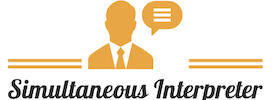
What Is Interpretation?
Language interpretation involves the verbal translation of a speech being delivered. The interpreter converts the speech in the source language into the required target language, just like a written translation. Six types of interpretation are widely used around the world: simultaneous, consecutive, whispered, travel/escort interpreting, over-the-phone interpreting (scheduled) and on-demand phone interpreting. It is the job of the interpreter to successfully deliver all the semantic elements in the speech including its tone. The interpreter also has to deliver the intent of the message the speaker wants to convey.Very Demanding Work
In the world of language services, simultaneous interpretation can be classified as the most demanding. The interpreter must have excellent language skills and more than average fluency in two languages. Further, he or she must be mentally prepared, especially if the meeting or conference is a long one and involves many speakers. Being a simultaneous interpreter means correctly interpreting what is being said while injecting the nuances necessary in the target language. The environment itself can already be stressful. The interpreter cannot consult a dictionary to look up unfamiliar expressions and terms, which is reason enough to have excellent proficiency in the source and target languages. The interpreter must be fully confident of their speaking skills. The job demands that the interpreter must also be skilled in improvisation.Typical Scenario
In simultaneous interpretation , the interpreter has to translate the thoughts and words of the speaker while he or she is still speaking, with a delay of about 30 seconds after the speaker starts to talk to process what is being said. The interpreter is located within the confines of a soundproof booth, while the participants in the meeting or conference listen to the interpreters using headsets. Simultaneous interpreting is very intense work, therefore, it often requires at least two interpreters. Each one typically interprets for about 20 to 30 minutes and takes a 10-minute break in between meetings. It is important that the interpreter remains alert or the interpretation might suffer. Thus, it is essential to have two interpreters to take turns in interpreting simultaneously. The interpreter wears a headset to listen to the speaker in full concentration. The interpreter listens to what is being said and interprets it immediately, which is transmitted to the headsets of delegates or participants who speak that particular language.Pros Of Simultaneous Interpretation
In simultaneous interpreting, the interpretation is delivered real-time, and the speaker does not have to pause and wait for the interpreter to translate the part of the speech that has been delivered. They can continue speaking while the interpreter does the work of translating the speech into another language. The interpreters are isolated from the conference participants thus it is possible to have the speech interpreted in different languages at once. The participants choose their preferred language by changing their headsets’ channel. Maintaining the smooth flow of the presentation is one of the main benefits of simultaneous interpreting. Time is precious, and in this type of interpretation, there is only a small delay before the delivery of the information from the source language into the target language. Simultaneous interpreting keeps the audience focused and attentive. During conferences, it is typically for participants to talk among themselves, read conference materials and handouts and look around to check the other participants, which means their attention is divided. When you have a simultaneous interpretation, event participants have to give their full attention to what the speaker is saying through the interpreters so they can understand the message. Their attention is caught because they have to listen to the interpreter. Simultaneous interpreting is ideal for large multilingual conferences.Cons Of Simultaneous Interpretation
Simultaneous interpreting is not interactive like the other forms of interpreting work. Likewise, it is more expensive because it typically requires two interpreters per target language. Due to the high concentration demanded from the interpreter when doing simultaneous interpreting, they need to rest every half hour. This type of interpreting requires special equipment, like soundproof booths, conference headsets, wiring from the booths to the headsets and microphones. The interpreters may also need to use cameras and video screens to see the speakers if the interpreters’ booths are placed in a different location from the conference.Whispered Over The Shoulder, Or From A Booth
Simultaneous interpretation generally comes in two types – whispered and interpreting booth. In whispered interpretation, the simultaneous interpreter is standing or sitting together with the delegates. The interpreter translates what the speaker is saying directly to the delegates. Whispered interpreting could be used when there are only a few delegates at the meeting, and they are either sitting or standing close together. Often, whispered interpreting is used in small groups or bilateral meetings where the participants do not speak one language. It is more time saving than consecutive interpreting. Whispered interpretation can also use headphones for sound clarity. In this case, a portable simultaneous interpreting equipment is used, such as portable transmitters with microphone and receivers with headsets. It is suitable for occasions where the participants have to move around such as during factory visits or museum tours. For large conferences, simultaneous interpretation booth is needed, as the interpreters require complete silence during simultaneous interpretation. Therefore, the booths have to be soundproof and large enough to fit a table as well as between two and four interpreters.Why Is It Important?
Interpreter at Work at United Nations
- It is an efficient communication provider as it allows delegates to enjoy the equal opportunity of sharing their knowledge or ideas. It also offers the chance for the delegates to listen to the speech in their mother tongue.
- As the interpretation is done real-time, messages are not lost. It allows the participants to express their views, thoughts and ideas comfortably in the language they commonly use.
- It ensures that the multilingual conference gains a better result because correct and proper communication is achieved with interpretation. Participants can communicate freely in their own language, knowing that they can reach out to fellow delegates effectively.
- Simultaneous interpretation avoids the time-consuming task of translating the documents and speeches in the languages spoken by all the participants. Everyone attending the conference becomes aware of everything that is being discussed because the interpretation is quick and immediate.
- Accuracy is assured with simultaneous interpretation as the interpreter immediately relays what the speaker is saying. In consecutive interpreting, the proper communication of the messages depends on the notes and what the interpreter remembers.





















